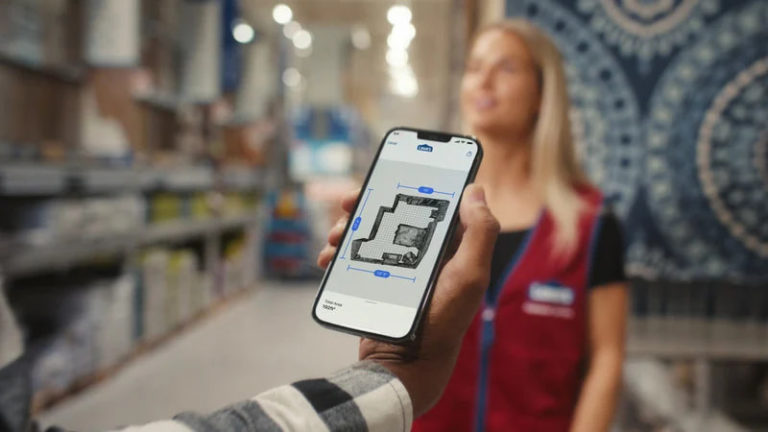
AR’s use in shopping is usually framed in the context of virtual try-ons. And that’s indeed a use case that continues to utilize AR’s strengths and create real value for consumer brands. By ‘value,’ we mean boosting product conversions and lessening pain points like returns.
But all the above takes place in an eCommerce modality, which was amplified in the Covid era when AR brought more product dimension to remote shopping. But what about AR’s role in physical retail…particularly as the world returns to real-world activity and IRL shopping?
Lowes is one company looking to answer this question. Its Innovation Lab designs and deploys various flavors of AR including its Spatial Commerce initiative and its Augmented Associates, which bring digital capabilities to analog retail spaces. Let’s take those one at a time…
The Immersive Commerce Era: AR & Shopping Collide
Gamified and Guided
Starting with Lowes’ Spatial Commerce program, it builds on the notion that our homes are the most meaningful and personal things we own. So shouldn’t we should use the best technology available to personalize those spaces? This is where AR’s evolving capabilities can add value.
For example, Lowes’ now works with Streem to enable spatially-accurate floor measurements. Streem is already embedded in AR for home services such as helping homeowners communicate issues (think: broken faucet) to local service providers visually before they show up.
But in this context, Streem is working with Lowes to help homeowners capture floor measurements for room design projects. These jobs usually start with getting floor measurements and Streem replaces the mistake-prone process of tape measurements with computer vision.
Once those measurements are captured by scanning a given room with a smartphone – through a gamified and guided experience – accurate measurements can be brought to a local Lowes store. From there, users can work with in-store associates to get all the right materials.
To go deeper into the gamified UX, it guides users through the process of comprehensive room scans by having them “paint” the unscanned areas of the floor until they’re all colored in. This type of object-oriented UX is helpful for a mass-market audience otherwise intimidated by AR.
According to Lowes Mason Sheffield during an AWE presentation, the next step is to move beyond flooring to entire rooms for broader projects. This was before Apple announced its Room Plan API so these types of experiences will be even easier to build for Lowes and others.
Can Apple Democratize Room Scanning?
Augmented Associates
The above workflows involve some in-home AR activity and some retail interaction. But moving more towards the latter, Lowes’ separate “Augmented Associate” program is all about creating AR-infused retail operations. For example, it’s using AR to help store associates “reset” aisles.
As background (and speaking as someone who used to work at Home Depot) a key part of an associate’s job at a big box home improvement store is to reset aisles to intended conditions. After a day of shopping, a given aisle can be in shambles, so things have to be put back.
So where does AR come into the picture? Lowes has equipped store associates with AR headsets so they can overlay proper aisle orientations and quickly reset things in a rapid and visually-guided way. To do this, Lowes is using Magic Leap headsets and Unity-created experiences.
As part of the UX, instructions can be altered on the fly for layout variations, new products, or seasonal shifts. But most of all, the benefits lie in reducing cognitive load, mental strain, and making store associates more effective. That has boosted adoption and buy-in, says Sheffield.
And that front-line worker buy-in is critical, given that the biggest barrier to enterprise AR deployments is resistance from end-users. In any case, Lowes is just getting started in bringing AR into its operations, and we’ll watch closely to see what the next retail-AR infusions bring.

